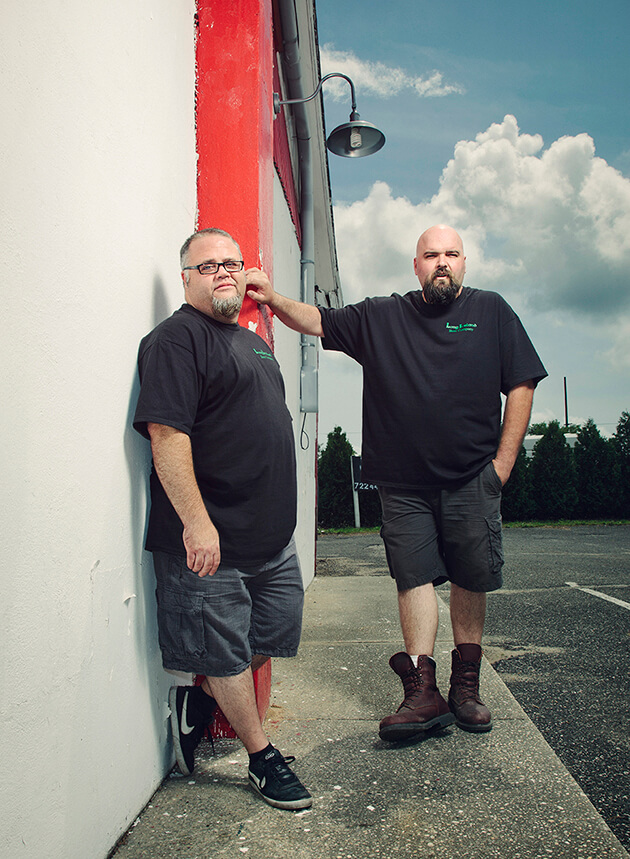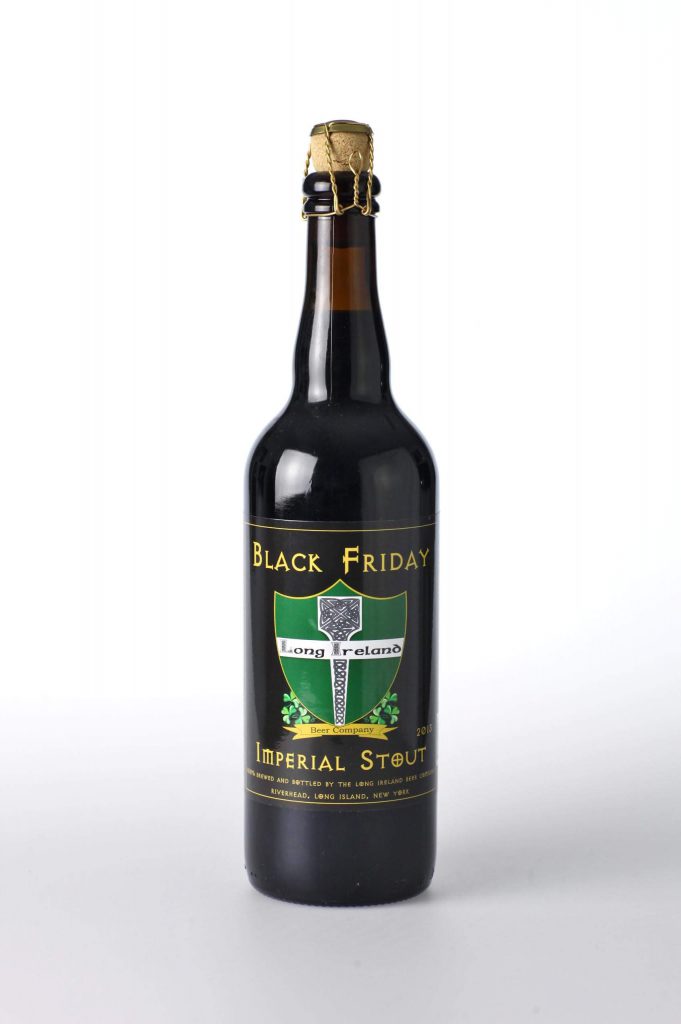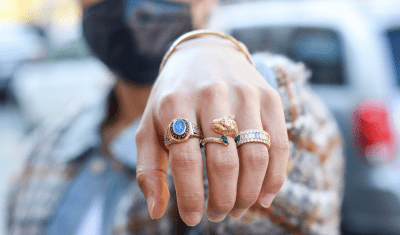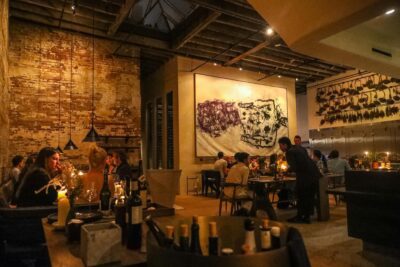An Oral History of Long Ireland’s Black Friday Imperial Stout, Newest Batch Coming This Friday


Photo by Matt Furman
As I revealed in a recent story for Edible Brooklyn, Thanksgiving is my favorite day of the year—not only was I ejected from my mother’s proverbial oven on Turkey Day in 1984, but the holiday’s fully enforced mandate of gut-exploding gluttony at my parent’s house is always a jurisdictional delight, even now in my thirties. I’m a Back Home Baller, yo.
While the annual marathon of excessive in-sweatpants feasting will forever receive my utmost praise, the following day, Black Friday, also deserves recognition. My championing isn’t fueled by any of Black Friday’s ethically questionable rituals deeply rooted in the stingy bowels of Alice Walton, either; it’s solely spurred by the annual arrival of Long Ireland Beer Company‘s Black Friday Imperial Stout, perhaps the most popular limited release from any brewery on Long Island.


At 9:00 a.m. each Black Friday since 2011, an ideal start even for the strategic shoppers who would dropkick an infant to save $12 on a VCR, Long Ireland has unleashed the dark-as-Shaft brew with a neat event that has become a tradition for devotees, myself included. On this morning, I substitute several snifter-sized pours of Black Friday for coffee and devour dozens of the complimentary Black Friday-battered waffles dolloped with vanilla ice cream, candied bacon, and maple syrup for breakfast. And before I depart the brewery, I purchase several bottles to cellar, since its malt-driven composition and 9.5 percent ABV will allow for further development.
An oily body topped with a cappuccino-colored crown, Black Friday’s recipe slightly changes each year, though a rich taste of milk chocolate, dark-roasted malts, and espresso always dominates. Dan Burke and Greg Martin, who started brewing their product at Connecticut’s New England Brewing Company before converting Long Ireland into a brick-and-mortar operation in the Polish Town section of Riverhead, don’t sugarcoat the process of crafting the yearly 30-barrel batch. It’s expensive: over $4,000 in grains are used in the recipe, while 750-milliliter bottles, corks, and cages are specially ordered for the arduous three days of packaging (most of the beer is bottled, and a limited amount will reach New York City this year). It’s a beer that unabashedly challenges the limits of their equipment, as well as their skills as brewers.
“We couldn’t fit anymore grain into the kettle if we tried. It’s truly to the max,” Martin says.
“The night we brew it, we don’t sleep. You’re hoping everything went right because you only get one shot with this,” Burke adds.
Before the latest batch is released this Friday, which will pour at the brewery’s tasting room alongside its three prior incarnations, Burke and Martin chatted about Black Friday’s history.
2011: The Debut
Dan Burke: We decided to brew an imperial stout in September of that year. It wasn’t named Black Friday yet; it was just going to be called Long Ireland Imperial Stout. It sat in the tanks and fermented for about eight weeks when we felt it was ready. Imperial stouts are bigger beers and the flavors need more time to develop.
Greg Martin: Probably by the end of October, when the beer was nearly done, we first thought about doing a release party. Just something simple. Nothing big like Southampton [Publick House]’s or anything.
DB: We were trying to think of what to do, and, that was around the time of the whole Occupy Wall Street thing. I’ll admit: The beer name and annual tradition was developed because of that movement. We started this brewery because we both have families to feed; we both have bills to pay. I’m out busting my ass 15 hours a day, and we’re far from rich. So, as a jab, I said, “Let’s give this beer a name that would be the biggest salute to capitalism we can think of.” And that’s how Black Friday was born.
GM: We realized, most people would be off from work the day after Thanksgiving looking for something to do. A beer release that day would be a perfect way to appeal to everyone that didn’t celebrate Black Friday by waking up at 4:00 a.m. to wrestle for a television.
DB: Once we came up with the name, I knew right away I wanted to change the recipe every year. People look forward to seeing the new and crazy Black Friday sales every year, so why not the same thing with this beer? It was another way to tie everything together.
GM: The beer came out and people dug it. It was nice and roasty, and had this chalky-dry finish. I still remember that finish. I was happy with it. But I didn’t think it would evolve into something as big as it has.
DB: I was thrilled. Remember: This was our first pro attempt at brewing an imperial stout. I’m my own worst critic, and I say it was about 90 percent of what I had wanted from the beer. But that didn’t make us rest easy. Once we knew we were going to brew it again and change up the recipe, the stress kicked in. Could we brew something like this again? This is only one batch every year, and we use about $4,000 worth of grain for it. We order special bottles, corks, cages, everything. It’s stressful. If we fuck it up, that’s it. You have to be all in or nothing.
2012: The Follow-Up
GM: It’s tricky changing something you were mostly happy with, but there were a few definite things on our list. I remember we added torrified wheat to thicken the body, and we upped the grain levels across the board. We wanted the beer to be heavier, more robust. And it worked.
DB: We were super happy with 2012. It was a noticeable improvement, and looking back, with the skillset we had then, I felt like it was a perfectly made beer.
GM: From the public’s perspective, that’s the most well-received of the three previous years. People still tell us 2012 was our best year. They say it’s cellared really well.
DB: Before we opened the brewery, we made our beer at New England [Brewing] in Connecticut. We’d go up there every two weeks to make Celtic Ale and we’d drive it back to Long Island. We had a great relationship with Rob [Leonard, owner and brewmaster] from New England, and honestly, we wanted to create a beer like his Imperial Stout Trooper; that’s a great beer. We wanted to make a beer that people would come on a special day for, and this was the year I felt like we proved ourselves to ourselves. We did it. And the people came.
2013: The Mistake
DB: You want me to be truthful? I didn’t like that year. This was a perfect example of the “better is more” theory being totally wrong. I was really excited to brew this again, and I’m the type that, if we need a gallon of something, I’ll add two or three. I always want more of something, whatever it is. I was too overzealous this time and it backfired.
GM: Dan argued with me to up the chocolate and caramel malts. He wanted more of those flavors, but I felt that too much would make it too sweet. So we went back and forth. Finally, I just went along with it.
DB: I claim full responsibility for the mistake. We upped the chocolate and caramel malts and it ended up just being too much. It was too sweet. I’m still kicking myself for it.
GM: We didn’t think it was necessarily a bad beer, but it definitely wasn’t the outcome we had wanted. It had this toffee-driven taste to it, like a liquid Werther’s Original taste.
DB: Fortunately people still liked it. I actually just got an email from someone in Florida who had traded for a bottle, and he said he wasn’t normally a stout guy. But he loved 2013. Everyone has different likes and dislikes.
GM: The last time we tried it was about a week ago, when we were bottling this year’s. And it tasted exactly how we remembered it tasting. But that’s one of the good things about brewing Black Friday, or anything annually. You get another crack at correcting your mistakes.
2014: The Now
GM: We wanted to scale down the toffee character, obviously. That was the biggest thing. We didn’t want to have that much sweetness. We also upped the alcohol. It’s been 8.5 percent every year, but we upped the beer to 9.5.
DB: We brought the chocolate and caramel malts down and upped the roastiness. It was a similar situation to last year: I wanted to up it 5 percent, but Greg argued for 2 percent. This time, we went for Greg’s idea and I’m happy we did.
GM: I’m proud: It has the best balance of any year, which allows all the flavors to independently shine. Hands down. The chocolate, caramel, and roastiness levels are perfect. And now there’s a little heat on the backend that you notice after about 20 seconds.
DB: This is my favorite year, without a doubt. It’s much more complex, mature. A lot of things are happening here. The head is perfect. It tastes so fucking good. Print that. I don’t care.
GM: We never change any of the grains. The ingredients are always the same. It’s just the levels that are different. It’s tricky to try and predict what a slight tweak may do to the overall picture. But, and I say this modestly, we knocked this year out of the park.
DB: I really look forward to making this beer every year. One, it’s a cool style. But it’s also become a tradition for some people, and, for us to make something that’s apart of someone’s yearly tradition, it’s a cool thing. It makes you feel good inside. We’re already talking about next year.
You might also like 




















